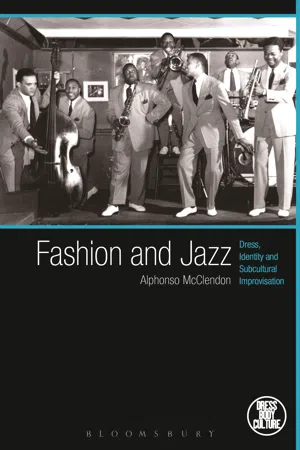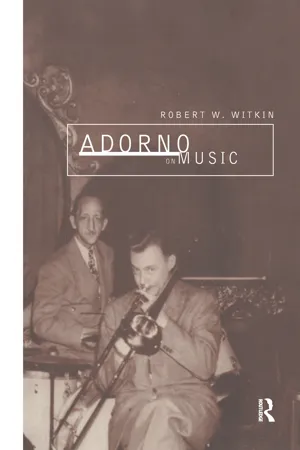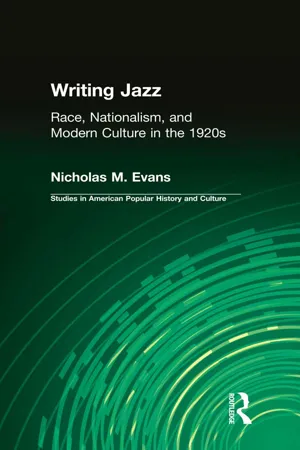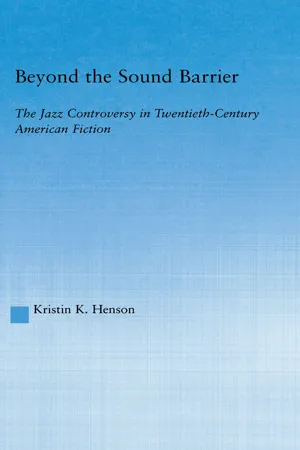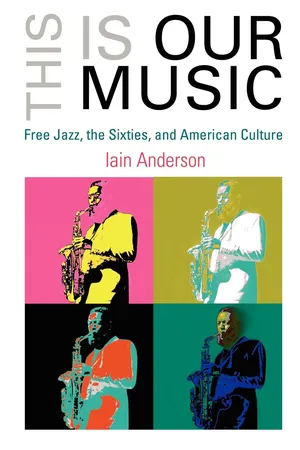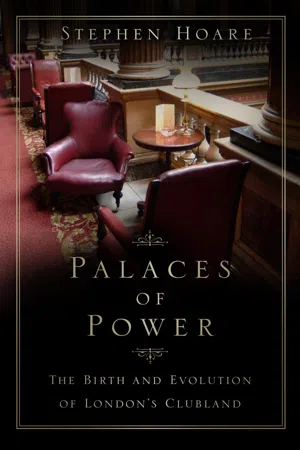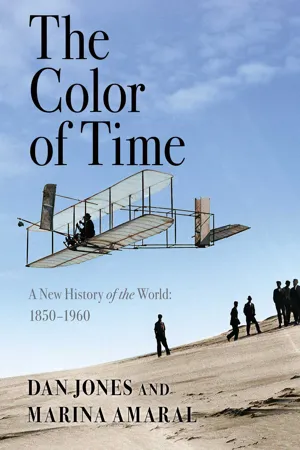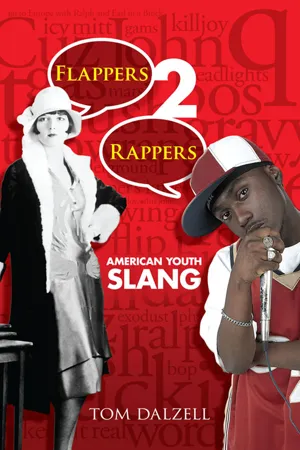History
The Jazz Age
The Jazz Age refers to the period in the 1920s when jazz music and dance styles became popular in the United States. It was a time of cultural and social change, marked by economic prosperity, technological advancements, and a shift in societal norms. The Jazz Age is often associated with the Roaring Twenties and is remembered for its exuberant and hedonistic spirit.
Written by Perlego with AI-assistance
Related key terms
8 Key excerpts on "The Jazz Age"
- eBook - ePub
Fashion and Jazz
Dress, Identity and Subcultural Improvisation
- Alphonso McClendon(Author)
- 2015(Publication Date)
- Bloomsbury Academic(Publisher)
In the late teens, a faction of musicians with honed skills on a variety of instruments departed New Orleans for Chicago, Kansas City, Los Angeles and New York. This black and white movement facilitated the influence of the Dixie style to new populations. Performers circulated the technique in urban centers, where it mimicked the hectic rhythms of crowded tenements, factory work and nightlife. The music was given the designations “jass” and “jazz.” The latter name, being the adopted title, embodied the vibrant energy and harmonic blend of the ensemble. In analysis of the genre’s ubiquity, Gioia asserted: “it seems almost anything in fashion would, sooner or later, be classified as jazz” (Gioia 1998: 77).The pursuit of freedom continued to be a theme that found voice in the generation born after 1900. Many were part of the great migration, a time when African Americans left the south for opportunity in large cities of the north. Although faced with continued segregation and economic barriers, these groups found solace in religion, as well visual, literary and performance art. This out-flowing initiated the Harlem Renaissance, a period between 1919 and 1929 that demonstrated interest, patronage and elevation of black arts. Although the experience was beneficial for a select group, a broader view places the renaissance as an essential marker on the path to civil rights for African Americans. The artists of the renaissance disseminated black aesthetics through fine art, photography, literature, stage performance and music. In a similar capacity, a youthful white population, coveting an escape from theFirst World War and the National Prohibition Act of 1919 that regulated the commerce of “intoxicating liquors,” indulged in socially liberating behavior. The music and dance exchanged between blacks and whites during The Jazz Age spawned challenges to racial constructs that would be triumphant in decades to come.Following the period of marching bands, vaudeville, tent shows and minstrel performances, the swing aesthetic exemplified the most polished of these fares. It fused visual and artistic qualities of each entertainment style into a single package. Considering this richness, Louis Armstrong recalled the musical assortment of the Joe Oliver Band in 1920s Chicago, when the ensemble traded between theatrical playing, dance tunes and blues renditions (Armstrong 1999: 53). Swing bands prospered into the 1930s with a unique blend of symphonic composition, polyrhythms, famed soloists and uncompromising appearance. Duke Ellington, Paul Whiteman, Count Basie and Benny Goodman developed considerable fame during this period, when elements of African American art were absorbed into the white mainstream. As recorded by the Pittsburgh Courier in 1929, an article featuring Harlem’s Cotton Club as a mecca of beauty and grace noted: “the crowd of New York’s white elite pounding the tables with tiny hammers for more” (Pittsburgh Courier - eBook - ePub
- Robert W. Witkin(Author)
- 2013(Publication Date)
- Routledge(Publisher)
9
THE CULTURE INDUSTRY AND ALL THAT JAZZ
To many people the most distinctively modern music of the first half of the twentieth century was jazz. Instrumental, dance and song styles proliferated at a rapid rate from the time of the earliest recordings of jazz music, which appeared during the First World War. The journey to mass popularity was impressively fast, and by the late 1920s jazz had permeated the entire field of popular music and entertainment. In the era of dance crazes and dance bands, the jazz idiom made itself felt both in its presence and sometimes in its absence in all the leisure space of bourgeois society. The term became a metaphor and cipher for an entire epoch, the label ‘jazz age’ gaining as much currency in some circles as had the ‘machine age’ at the time of the Futurists. Even the modernity of certain figures in American literature — Scott Fitzgerald, for example — was identified with a style of interpersonal relationships and social life that was summed up with the label ‘jazz age’. Jazz was a music that seemed to be part and parcel of the modern city and its leisure spaces, a music that was accessible, in its various forms, to city people everywhere; a genuinely popular modern music, sounding the dreamscape of the metropolis and reflecting the colour and pulse of life and relations in the city.The discourse surrounding jazz went further than this. Jazz was praised for its inventiveness. Its devotees invested its best examples with the kind of serious respect due to an avant-garde music which they saw as opposing the stuffy conventionality of the bourgeois order. The ‘mantle of primitivism’, eagerly donned by many so-called serious modern artists and composers, seemed to be the very birthright of jazz musicians; what modern Western music could stake a greater claim to genuinely ‘primitive’ origins? In the context of modernist art, the primitive has often been invoked as the hallmark of all that is progressive. Also, in its more advanced forms, jazz could claim to be a music that was developed in live performance - eBook - ePub
Writing Jazz
Race, Nationalism, and Modern Culture in the 1920s
- Nicholas M. Evans, Jerome Nadelhaft(Authors)
- 2015(Publication Date)
- Routledge(Publisher)
HAPTER 2“The Jazz Age”
Nativism, Ethnic Pluralism, and Their DiscontentsD uring and after World War I, music and dancing identified as jazz emerged in U.S. popular culture, principally in major Northern urban centers. As we shall see, many of the same valences and issues that circulated in and around the spirituals and ragtime informed jazz’s reception. However, for various reasons, jazz received more attention in public discourse than its musical co-styles had or continued to have. One major reason involved the accelerated African-American migrations prompted by the war: “half a million blacks went north between 1916 and 1920,” largely in pursuit of better socioeconomic opportunity (Perrett 83). Jazz, associated with blackness, seemed to arrive along with the migrants. The growing black populations of Northern cities, definitively establishing their social presence, joined immigration as a source of bourgeois, white, “nativist” anxiety. As shown by the history of Harlem just before and after the war, this anxiety motivated efforts to contain the “Negro invasion” (Osofsky 105–110). In other urban areas, the social tensions engendered by a sizable black presence led to more overtly violent results. The year 1919 saw numerous race riots in the South and, more dramatically, Chicago and Washington, D.C. Unsurprisingly, many commentators also identified 1919 as the year of jazz’s emergence. Writing in retrospect in 1931, Daniel Gregory Mason echoed the response of Harlem landlords to migrating African Americans: “[b]y 1919 Americans clearly were experiencing a ‘jazz invasion’” (qtd. in Moore 84). At one of the broadest levels of signification, jazz culturally registered significant shifts in the relations between ethnic groups and social classes.Another reason jazz received more attention—or, better, more space in print—related to the postwar economic boom. The circulation of books and periodicals, as well as the actual numbers of publishers and publications, increased notably. George Hutchinson cites Martin J. Sklar’s notion of economic “disaccumulation” to help account for this florescence. Disaccumulation, which attended the rise of corporate capitalism and industrialization before the war and accelerated after it, contributed to the growth of educated classes who were not directly engaged “in the immediate production and reproduction of the material means of life” (Sklar qtd. in Hutchinson 8). This growth engendered larger numbers of intellectual and cultural producers and consumers: the writers, publishers, and readers of mainstream publications as well as the “little magazines” and works issued by new, small presses. Hutchinson persuasively argues that we should view the Harlem Renaissance in this context. The new means of textual production and reception enabled a much wider array of African-American writers, such as Langston Hughes (Chapter 4 ), to circulate their alternative perspectives. Yet not only minority intellectuals benefited from the publishing opportunities of the 1920s. Disaccumulation also helped make possible the fiction and cultural criticism of the principal figures considered in this chapter—Carl Van Vechten, Gilbert Seldes, and Sampson Raphaelson—as well as the work of F. Scott Fitzgerald (Chapter 3 - eBook - ePub
Beyond the Sound Barrier
The Jazz Controversy in Twentieth-Century American Fiction
- Kristin K Henson(Author)
- 2013(Publication Date)
- Routledge(Publisher)
“Jazz” emerged as a slang term with sexual connotations (like rock n’ roll decades later), and many different styles of American popular music were widely referred to as jazz. The term was associated with a distinctive Americanness that had been forged into fast, urban sophistication out of the “raw” materials of “down home” folk practices. The new music helped to establish American cultural independence from Europe as well as national and international markets for American cultural capital. In “Echoes of The Jazz Age,” Fitzgerald records his impressions of the prevailing attitudes of the twenties. He cites 1922, the year in which The Great Gatsby is set, as the year that marked “the peak of the younger generation” (15), one generation younger than his own. After that year, he claims, the social upheavals became more generalized and less of a matter of youthful rebellion. The result was “[a] whole race going hedonistic, deciding on pleasure” (15). Interestingly, in the twenties “race” and “nationality” often were used as interchangeable words, as if nations could be defined by their monoracial character and as if those who were outside of the dominant race had no claim to nationality. This usage, therefore, linguistically constructed “American” as white and Anglo-Saxon. Still, Fitzgerald places an interracial cultural product, commercial jazz, at the center of the 1920’s hedonistic movement. “The word jazz in its progress toward respectability has meant first sex, then dancing, then music” (“Echoes,” 16), Fitzgerald asserts, and this observation indicates that he knew the changes in the implications of the word as it moved from folk expression to urban entertainment - eBook - ePub
This Is Our Music
Free Jazz, the Sixties, and American Culture
- Iain Anderson(Author)
- 2012(Publication Date)
- University of Pennsylvania Press(Publisher)
Chapter 1The Resurgence of Jazz in the 1950s
“Jazz Makes It Up the River,” declared a New York Times Magazine headline of August 24, 1958. “The long voyage from New Orleans barrel-house to public respectability ends in a triumph.” Gilbert Millstein, author of the accompanying article, was not alone in recognizing a dramatic improvement in the music’s fortunes during the middle and late 1950s. “Jazz Achieves Social Prestige,” marveled Leonard Feather in a Down Beat article of 1955. The same year, Life magazine’s photo-spread acknowledged a “New Life for U.S. Jazz,” and a few years later Esquire celebrated “The Golden Age of Jazz” with a twenty-page feature and photo special. Jazz music’s glowing reviews shared two common and repetitive elements. First, they characterized the music as an art form, not the folk or dance music of its past but a cultivated creative achievement that shared the spirit, and increasingly the audience of the best modern classical music. Second, reviewers identified jazz as the product of a sociopolitical environment unique to the United States. Thus numerous magazine features employed similar metaphors for jazz: Esquire ’s editors dubbed it “America’s major original art form” or “America’s one indigenous art form,”Collier’s recognized it as “a true American art form,” and High Fidelity as “America’s . . . vital art form.”1The increasing acceptance of jazz as “America’s art form” during the 1950s appeared unlikely at the beginning of the decade. Bebop, the dominant style of the late 1940s, had capitalized upon the complex musical language of wartime jam sessions to exploit a niche market for virtuoso improvisation among urban sophisticates. Musicians such as Charlie Parker, Dizzy Gillespie, Thelonious Monk, and Kenny Clarke struggled to make it pay on the fringes of a collapsing dance band economy yet failed to make the transition from popular to art status willed by their supporters in the jazz press. The difficulty lay not only in their ambivalent engagement with the legacy of western art music, although bebop’s belated exploration of chromatic harmony and unsettling rhythmic momentum (signaled by explosive bass drum bombs and double-time passages) underlined the distance between the traditions. More seriously, the music industry’s persistent institutional racism dashed expectations of meaningful professional advancement raised by the swing era’s business boom, infusing musicians’ artistic stance with a militant style that proved difficult for cultural gatekeepers to digest. Owing as much to the urban hipster as the avant-garde modernist, bebop’s code of language, behavior, and dress, and recurrent association with illegal drugs, carried the allure and the menace of a racialized nonconformity, its comedic and tragic sides modeled alternately by Gillespie and Parker. White admirers of bebop frequently mistook hip transgression as the only authentic expression of black identity, rather than as one manifestation of a diverse and contested culture. As such, they helped distill public perceptions of the musicians as deviant outsiders through a series of essential symbols such as the beret, horn-rimmed glasses, zoot suit, goatee, and hep talk. These images disturbed greatly those musicians, critics, and businessmen who had pinned their hopes on the potential for modern jazz to shepherd the music to respectability.2 - eBook - ePub
Palaces of Power
The Birth and Evolution of London's Clubland
- Stephen Hoare(Author)
- 2019(Publication Date)
- The History Press(Publisher)
CHAPTER 8
The Jazz Age: ST JAMES’S IN THE 1920S AND ’30S
I’ve danced with a man, who’s danced with a girl, who’s danced with the Prince of Wales. ‘It was simply grand,’ he said ‘Topping band’ and she said ‘Delightful, Sir,’ Glory, Glory, Alleluia! I’m the luckiest of females For I’ve danced with a man, who’s danced with a girl, who’s danced with the Prince of Wales. Lyrics by Herbert Farjeon 1927Following the First World War, life started slowly returning to normal for the shops, cafes, restaurants and hotels of St James’s and Piccadilly. In keeping with the spirit of the age, the area embraced popular culture. Women who had worked in factories and staffed the buses and public transport and who were soon to be given the vote were more visible on the streets. With long cigarette holder, beaded Charleston frock and bobbed hair, the 1920s ‘flapper’ shouted independence. The Great Depression which had spread to Britain after the Wall Street Crash of 1929 brought mass unemployment. In Britain 2 million workers had lost their jobs, mainly in the North, Wales and the Midlands. London did not escape its effects. What is sure is that The Jazz Age sparked a counterculture – a constellation of exciting new clubs and a night-time economy catering for a richer, more varied demographic than the traditional gentlemen’s club.Post-War Recovery
The First World War had cast a very long shadow over Clubland. During 1914–1918 almost an entire generation of young officers had been killed in action. Where once fathers would have arranged for their sons to be elected to their club, the generational link was severed. It would take many years to recover. Membership of some clubs fell sharply as new members were insufficient to replace older members after their death.Some, however, view the interwar years as a golden age for members’ clubs. Where once men in uniform were seen around the clubs, now clubs reintroduced Edwardian formality and members were expected to wear full evening dress for dinner. Likewise servants, in many cases men too old to have fought in the war, donned livery in club colours. The old order could not continue. Harold Macmillan, Tory prime minister from 1957–1963, was one of the first politicians to sever the tribal ties between politics and Clubland. In marrying Lady Dorothy Cavendish in 1920, Macmillan had joined one of the foremost families in the land. His father-in-law, the 9th Duke of Devonshire, was a leading member of the Liberal-leaning Brooks’s and was the owner of the exclusive Pratt’s Club. Despite being a Tory, family connections trumped political affiliation as the highly clubbable Macmillan joined the duke’s inner circle. Although Macmillan subsequently became a member of the Tory Carlton Club, he was completely at home at Brooks’s, the Beefsteak, and Pratt’s Club. - eBook - ePub
- Dan Jones(Author)
- 2018(Publication Date)
- Pegasus Books(Publisher)
Armstrong’s jazz career was just beginning in the 1920s, and he was destined for great things: playing and creating music for an extraordinary five decades. His singing voice was – and remains – unmistakeable, a rich glorious gravelly sound that was so compelling whether Armstrong was performing conventional lyrics or working on ‘scat’ – an improvised nonsense style made up of pure rhyme and scattergun sound. And of course there was also his brilliance as a player – powerful lungs and a divine gift for blowing into brass combining to make him the most recognisable and widely imitated musician of his moment. Although Louis Armstrong was still learning his craft in the 1920s, he was nevertheless a musical great who lived his life suffused with the spirit of that era.In the Western world, the 1920s was a revolutionary, iconic decade. It was known variously as the Roaring Twenties, the Golden Twenties and Les Années folles (‘the crazy years’). Economies and societies began to recover from the damage inflicted by the Great War. New technologies such as the motor car, air travel, radio and cinema changed the way that people travelled, communicated and lived.Daring attempts were made to climb the world’s tallest mountains and fly across oceans. Women were granted the right to vote. Writers and artists experimented with new styles, which did not merely lament the damage wreaked by the war of the previous decade, but also set out bold new visions for the future.Yet, at the same time, beneath the optimism of this brave new world, fresh horrors were being spawned. The Bolshevik Revolution in Russia had created civil war, famine and tyranny. Benito Mussolini’s Blackshirts marched on Rome and carried out a coup in the name of the violent doctrine of fascism. Germany’s defeat in the Great War and the severe peace imposed at Versailles created economic meltdown and stirred extremist parties such as Adolf Hitler’s NSDAP (Nazi Party). The crude division of the Middle East which followed the Ottoman Empire’s collapse incited Arab resentment and insurgency. Britain’s failure to reach a satisfactory settlement in Ireland caused a civil war that created more Irish questions than it answered.Mexico’s long-running problems showed no signs of abating with a war between Catholic peasants and a resolutely anti-clerical government. And even America, the birthplace of Twenties optimism, bubbled with reactionary resentment, including a rebirth of the Ku Klux Klan and gang warfare caused by a disastrous experiment with the prohibition of alcohol. Then, as the decade drew to a close, the Wall Street stock exchange blew up, and the Golden Twenties gave way to the gloom of a Great Depression. - eBook - ePub
Flappers 2 Rappers
American Youth Slang
- Tom Dalzell(Author)
- 2012(Publication Date)
- Dover Publications(Publisher)
Chapter 3 The 1930s:The Joe and the Jerk
“They’re mugging light, they’re muggin’ heavy, they’re in the groove. They’re goin’ to town! They’re SWINGIN’!”
T he early 1930s were chaotic years in the United States. The national banking system collapsed, industrial output was drastically depressed, unemployment mounted without respite, and hourly wages plunged for those who were lucky enough to be working. Hunger, homelessness, desperation and dejection were epidemic. One-third of the nation was, President Roosevelt said, “ill-housed, ill-clad, ill-nourished.” Those who were not were ever conscious of the precipice over which they too could plummet.Popular youth culture was in many ways undaunted by the nation’s troubles. The entertainment industry knew an opportunity when it saw one, and the 1930s were glory years for the escapes of radio, movies, and music, all of which held no small appeal for America’s young. Low-cost entertainment such as miniature golf, pinball, and jukeboxes swept the country, as did fads such as goldfish swallowing. As Grace Palladino observes in Teenagers: An American History, until the Great Depression most young Americans worked for a living and high school was the domain of the privileged few. The Depression forced young Americans out of the farm, factory, or the home into high school, and in the process of this shift they became for the first time a generational age-group, a separate teenage nation.Popular youth culture of the early 1930s was defined as much by its revolt against the excesses of the Flapper era as it was by the exigencies of the Great Depression. Youth culture for a few years shied away from the subversive and daring ethic of the Flapper, with Joe College (according to Maurice Weseen “An imaginary typical college boy; a college student of the rah rah type”) and the soda fountain worker (the jerk) epitomizing the cheerful, optimistic, wise-cracking young. Especially in light of what hardships were to come, those who came of age in the early 1930s were a naive yet hopeful group, with a popular culture that reflected the small town, hometown, rural character of the country more than the urban values of Harlem and jive. While spurning the outlaw aspects of the Flapper years, popular youth culture of the early 1930s was nevertheless full of vitality, energy, and humor.
Learn about this page
Index pages curate the most relevant extracts from our library of academic textbooks. They’ve been created using an in-house natural language model (NLM), each adding context and meaning to key research topics.
